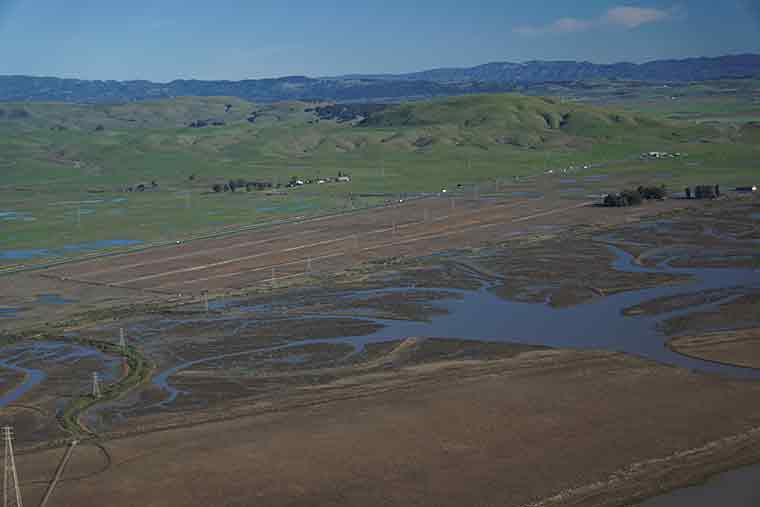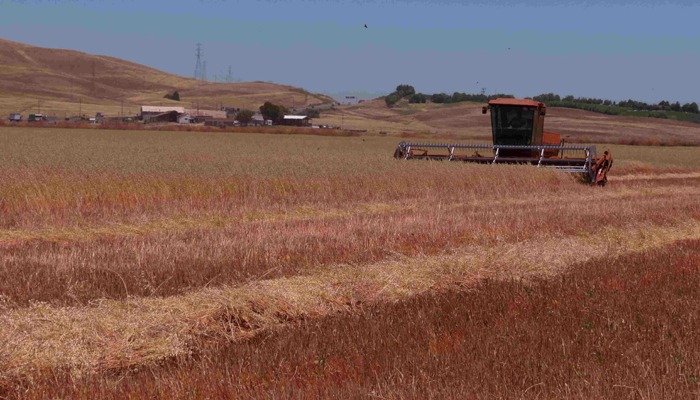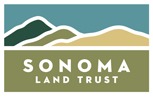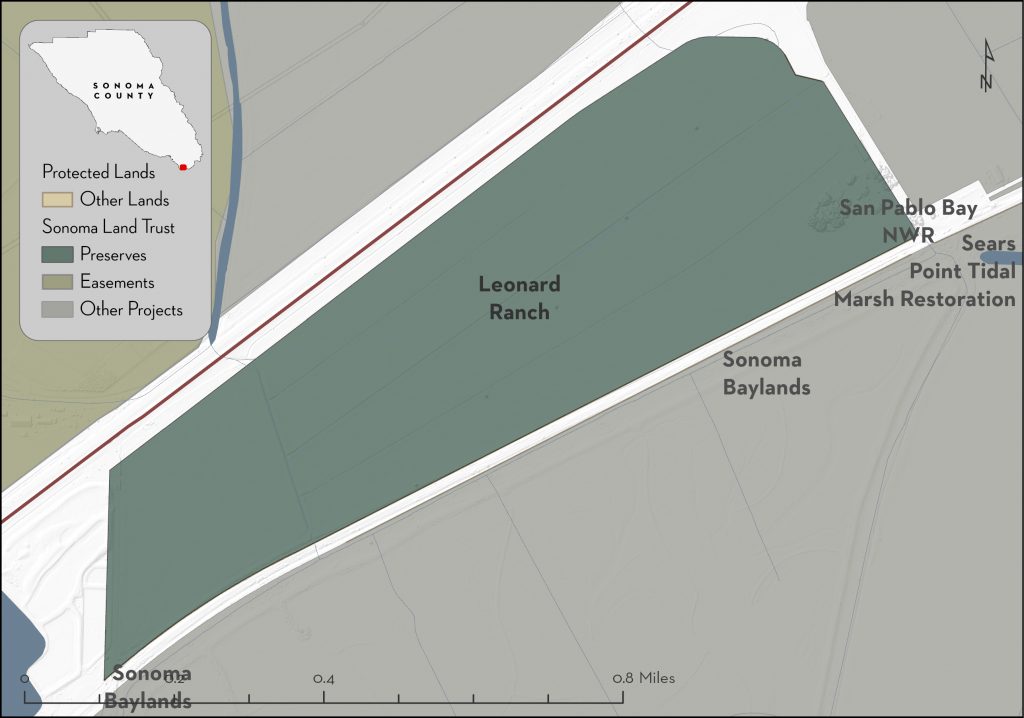LEONARD RANCH
Property Type
Ecological Preserve
Acreage
244
Protected in
1990
Region
Sonoma Baylands & Petaluma River
Agriculture In an Iconic Landscape
Leonard Ranch separates the salt marshes of the San Pablo Bay National Wildlife Refuge (formerly the southern half of our Sears Point Ranch) from the nonstop traffic of Highway 37. Most of its acreage is farmed for oat hay, the dominant crop in the salty, acidic soils of the Baylands, while 40 acres of it are set aside as grasslands and seasonal wetlands popular with foraging raptors. Leonard Ranch is the only actively farmed property in the Baylands that is owned by Sonoma Land Trust and it helps us maintain an essential relationship with the local farming community.
Conserving Habitat and Agriculture

The 244-acre Leonard Ranch was part of an 870-acre purchase completed nearly 30 years ago. It was Sonoma Land Trust’s first large acquisition in the Baylands and multiple stakeholders voiced opinions on how the land should be used. Those voices are represented in the diverse manner in which those lands are used today.
When we purchased the property, all of the land was farmed for oat hay. Today, nearly 350 acres have been restored to tidal marsh in the Sonoma Baylands portion of the San Pablo Bay National Wildlife Refuge. Nearly 85 percent of tidal marshes around the bay were lost over the past century, and ours was an early and successful effort at restoring these valuable wetlands. Leonard Ranch itself was kept in oat hay production in recognition of the agricultural history of the area and the need for farmers to have land for crops. North of Highway 37, the focus was on seasonal wetlands, a habitat that has declined by more than 70 percent around the margin of the bay. Also now part of the Refuge, this land is seasonally grazed outside of the winter season when the pools fill with water after heavy rains.
For conservation to succeed on a large scale, we recognize the necessity of listening to differing values and, where appropriate, allowing land to be used for agriculture in ways that don’t permanently change its character.
Farming

Cresting the Petaluma River Bridge and crossing into Sonoma County, one is greeted mainly by open space. Most like it that way. The presence of agriculture has contributed greatly to the persistence of wide open spaces here, unlike most other places around the bay.
Farming at Leonard Ranch and other farms along the bay margin is not easy, however. For one thing, these former tidal marshes have highly acidic soils and have subsided by six feet or more. The former means that the choice of crops is severely limited, mostly to oat hay, and the soils must be amended to enable plants to grow. The latter means that rainwater cannot drain to the bay because the land is lower than the bay, so all rainwater must be pumped out at considerable expense.
But farming here continues nonetheless and the farmers provide Sonoma Land Trust staff and partners with vital knowledge. Whether it be their understanding of how water moves across the landscape or how to most effectively plant a levee, we are grateful for their know-how and applaud their desire to devote their lives to the land.




